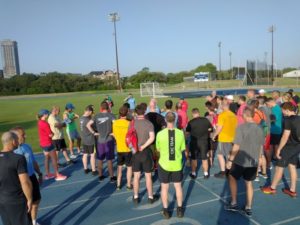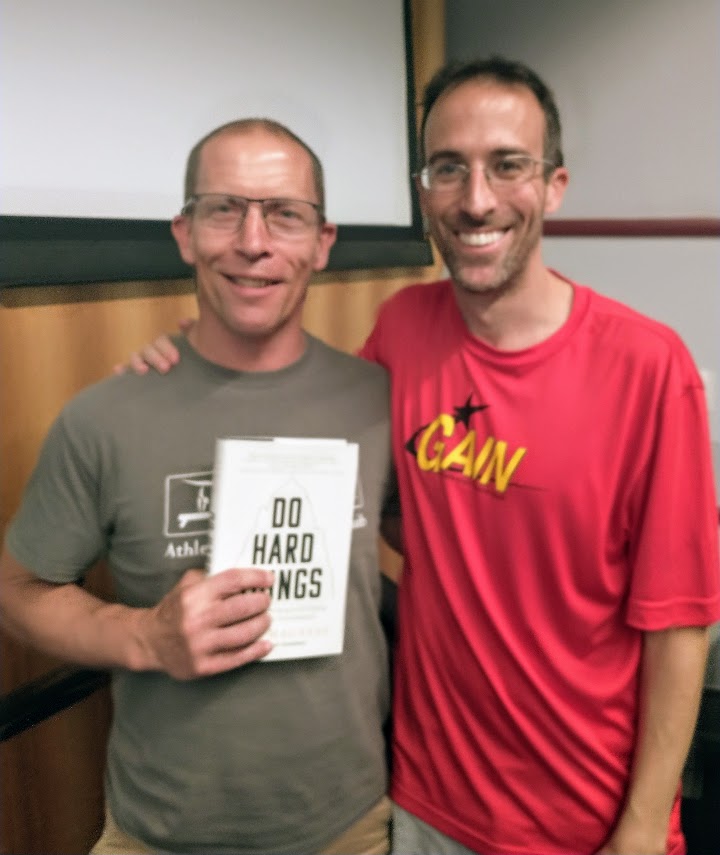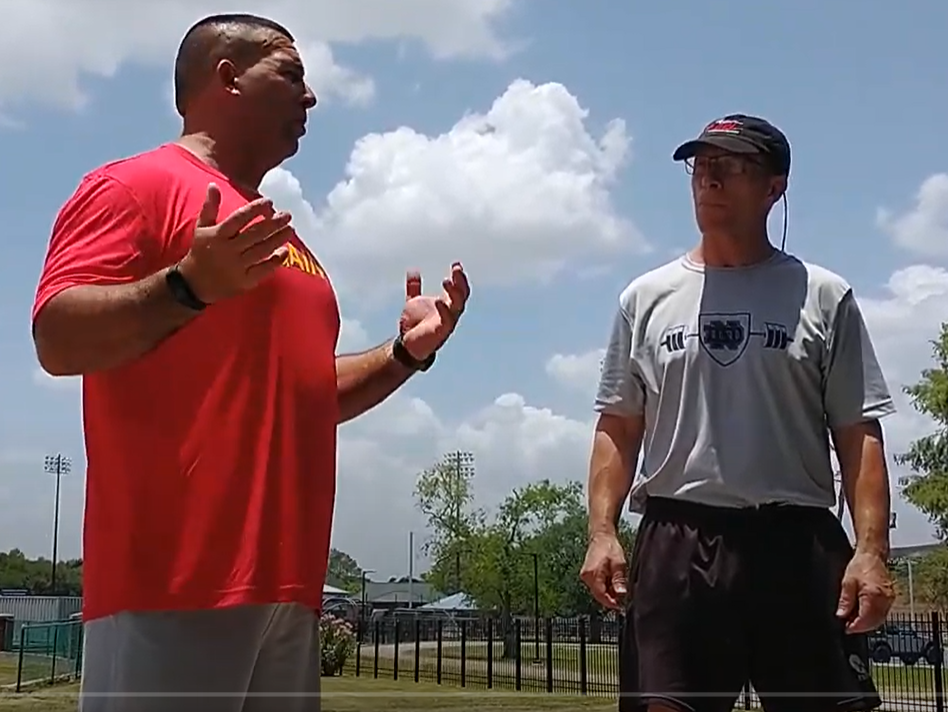3 Take Home Lessons from GAIN 2022
I have just returned from Vern Gambetta’s GAIN conference at Rice University, Houston. This was my 9th time attending this event.
It is a mixture of practical workshops, lectures and small group discussions between sports coaches, athletic trainers, strength and conditioning coaches, athletic development coaches, administrators and at least one professional athlete.
‘So what?’ You might say.
What is different at GAIN is the sheer enthusiasm and desire to learn and share ideas ‘off-piste.’ I relish the chance to catch up with consummate professionals who have shaped my career over the last 11 years. I also meet excellent new people every year that teach me something new or offer advice on solving problems that I encounter.
The jet lag was a killer this year: my body clock seemed stuck in the mid-Atlantic all week. That made anything after 1700 hours a blur. The good news was that the early morning sessions were a blast. My roommate, Andy Stone, and I always get to the track at 0530 to train: an hour before we have to coach.
Others join us and we come up with some ideas that riff on what others have taught or that we have developed over the years. You can see a sample in the video below:
3 Lessons and Take Home Messages
Everyone likes a list and a key ‘takeaway’ (as if that can replace investing hours of time learning and sharing), so here are some of mine. I shall post a couple of more detailed reviews in the near future.
1. The importance of variability within training.
Dr Grace Golden (University of Oregon) gave another excellent presentation on structuring injury rehabilitation. Grace uses Rudolf Laban’s ideas of a movement framework (amongst other sound coaching principles) to create minor variations within exercises: Repetition Without Repetition (RWOR).
e.g. Instead of doing 3 x10 forward lunges, Grace gets athletes to change an aspect of the movement either every rep or every few reps. This could be an arm position, a foot angle, the distribution of weight, adding an implement, or receiving and passing an object.
This prepares athletes for the infinite movement possibilities that they will encounter in the cauldron of competition rather than just getting them better at lunges.
Take home message for me: Add a variation for each set when we do dbell exercises for our beginner groups rather than 5 sets of the same and then changing it the following week.
2. Identifying challenges and threats.
Steve Magness gave a talk based on his new book ‘Do Hard Things‘. Instead of outdated, macho ideas of ‘beasting’ players, toughness can be developed through support and preparation.
One part of the presentation resonated with me. People often see situations as either a threat or a challenge. They appraise the difficulty of the situation and their ability to handle it.
I recalled a recent competition where some of our athletes were eager to get on the track and warmed up on their own while a couple shrunk into their skins and looked as if they wanted the ground to swallow them up. Some looked forward to the challenge, the others might have felt threatened.
Take home message for me: Sit down with our athletes and chat about upcoming competitions. I can help them prepare for the challenge or deal with the perceived threat. I know it’s simplistic, but it is a starting point for a conversation.
3. Using drop-in microcircuits.
Nick Garcia coached an excellent gym session before explaining his underpinning philosophy in a clear and concise lecture. Nick uses 3 modules of training with his high school athletes that are categorised by movement. Each module has 3 exercises that are performed in rotation.
e.g. Module 3:
· Exercise 1: Hinge/hip/ posterior chain exercise.
· Exercise 2: Upper body push.
· Exercise 3: Mobility.
Within those categories, Nick adjusts the exercise according to the sport. An offensive tackle might do heavy bench press and a volleyball player might do dbell push press.
Nick deals with large groups of students and has to be very organised to ensure that everyone gets as much done as they can within 40 mins. This shows in his work.
Take home message for me: A lot can be done in less than 10 minutes if the exercises are clearly explained and are familiar to the athletes. I can create a few ‘quick wins’ modules that I can use with certain groups.
Brain Pickings.
I have given a very brief snapshot of some ideas that I am going to implement at our club and in my coaching. Over the next few weeks I shall review my notes and do some deeper reflection. There were several excellent lectures that require further thought.
I also had some specific questions or problems that I needed help with. I knew whose brains I wanted to pick.
· Brian Fitzgerald: Coached an excellent warm-up for sprinters and I asked him a LOT of questions about his cues and session organisation.
· Jim Radcliffe: he gave me a short master class in the high hurdles. If he can get an old duffer like me moving over them, then I am sure his methods will help our club athletes. I was buzzing after that lesson.
· Nick Garcia: gave up his valuable lunch hour to coach me on rotational throws. Our club athletes are keen to throw shot and discus and I needed to know more to help them. Nick broke down the progressions and made me do them time and again until he thought I was nearly there. This will be invaluable.
Summary
Thanks to Vern for inviting me over. This was another great event, all the more for not having been run since 2019. I lost count of the number of interesting conversations I had over breakfast, lunch and dinner, as well as in breaks and late in the evening.
Thanks to Xavier for the maple syrup, Chris Webb for the Indian Clubs and to everyone else for sharing their ideas and enthusiasm with me.
I hope I can distil the information and help our athletes improve further.




